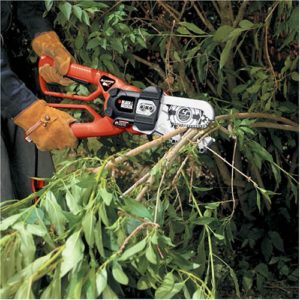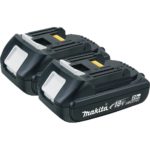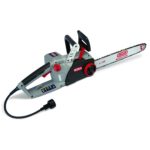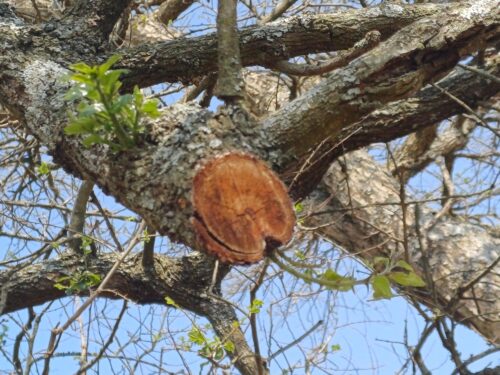Is a Garden Pruning Chainsaw the Answer?

A Lopper – The best option??
Do you really need a chainsaw to help you prune your garden? Or do you actually need a mini chainsaw?
Well I suppose it depends on the size of your garden and the size of the plants in your garden you need to prune!
Pruning your garden can be a challenging undertaking. The bigger your patch of earth and the more plants you have, the bigger the challenge.
But if you get it right, the rewards are worth all the toil and trouble.
A well pruned garden gives rise to an awesome garden a few months later. It’s one of Nature’s many wonders playing out right in front of your eyes.
But pruning can still be the proverbial pain in the butt!
CHAINSAW FACTORS
However, one way to speed up the pruning process is to get tooled up properly.
And this is where the idea of a specially designed garden pruning chainsaw comes in.
Now chainsaws come in a range of sizes, weights, lengths, power sources and so on.
So what are the factors should you consider before buying a chainsaw to help you prune your garden with?
a) PLANT SIZE
Logically, the first consideration in choosing an appropriate chainsaw for pruning, is recognizing WHICH plants you need to prune. Small trees? bushes? woody stemmed plants e.g. roses and so on.
Most gardens will actually have a mixture of all these plants. So perhaps the decision becomes: up to what size (read circumference) of plant/tree are you able to/willing to handle on your own?
Assuming that you are a weekend gardener and not about to take down or “trim” a big tall tree, then a variety of possible chainsaws come to mind.
If you are really only going to prune plants with a diameter of an inch (2.5cm) or smaller, then it might be better to look at some of the Top Rated Cordless Pruning Shears
But before we get into that, there are a few other aspects to consider.
b) POWER SOURCE
In essence you can choose from gas or electrically powered with the latter broken down further into battery powered or hooked up to your electricity supply via an electrical chord and extension.
While electrical batteries are improving in leaps and bounds, its probably true to say that gas powered chainsaws are still the most powerful options available. They are also the noisiest and require a lot of upkeep, not to mention fuel guzzling and weighty.
Most homeowners will not need a gas powered chainsaw for pruning!
For 95% of gardeners then, an electric pruning chainsaw will be more than adequate, not to mention more neighborly and better for the environment.
The question then becomes – battery or electrical chord powered?
Here are a few pointers which might help you decide which option would best suit your purposes.
1) Battery Operated Chainsaws

Pros
– The major plus is that they are not hindered by a cord so can operate wherever you need it to be.
– You don’t have an electrical cord dragging along behind you which can be both cumbersome and potentially dangerous.
– Often the batteries can be used for other (same brand) electrical tools like drills and blowers.
– They are relatively quiet.
– The batteries are rechargeable.
Cons
– The major downside is that batteries have limited operational time before they need recharging. However this can easily be overcome by having more than one battery. You simply rotate them, using the one while charging the second one.
– The cost of additional batteries if you go that route.
– The chain speed is not as high.However, this is not really a significant factor when your chainsaw is used for pruning and other small jobs around the garden.
2) Electrical Chord Powered Chainsaws

Pros
– The major one. No need for battery changes to keep pruning away and….
– No need to double up (or more) cost wise for those extra batteries.
Cons
– You can only work close(ish) to a power point as you have to be plugged in!
– Extension chords can’t stretch forever and in fact, the longer the extension chord, the bigger are the consequences for your chainsaw performance and longevity.
– Wherever you go, you have to take the chord with you.This can be quite irritating and cumbersome, not to mention dangerous (again)!
And while we are dealing with electrically powered chainsaws, lets not forget to think about the “normal” vs “brushless” electrical motor debate.
It is a racing certainty that brushless electric motors are where things are headed, and although still a bit more expensive, chainsaws with brushless electric motors are likely to perform better and last longer thus probably making it worthwhile to pay the difference now and reap the benefits later.
c) WEIGHT
So how fit are you?
While most of the chainsaws we will consider here are relatively light, you are probably not a lumberjack! Be aware that using one of these chainsaws for any length of time can become a physical challenge!
Hence the lighter the better – as long as light does also not equate to flimsy and quick to break down!
Unless you opt for a mini chainsaw or pruning secateurs, you are not going to get away with carrying around much less than 3kg (7 pounds odd). So be prepared for this aspect of using a chainsaw for pruning.
And you can imagine how adding an electric extension chord to this can significantly increase the physical effort required – score one for battery operated models!
d) BAR LENGTH
Chainsaw bars (the bit which the chain runs around) vary in length – with the vast majority having a “blade” between 12″ – 30″.
This of course excludes Mini Chainsaws which can have bar lengths from 4 inches to 8 inches
This has a number of implications for the garden pruner because:
The longer the bar
– the more cumbersome the chainsaw is to operate in a garden environment
– the heavier the whole chainsaw is likely to be
– the more expensive the chainsaw will be upfront – plus you will pay more for things like replacement chains etc simply because they are bigger
So, in general, the shorter the bar or blade the more useful the chainsaw will be for garden pruning. Think lighter, more easy to maneuver, cheaper and so on.
Mini Chainsaws are perhaps the most user friendly for day to day pruning. Examples are the The Prunarbo 8 Inch Chainsaw
and these Six Top Rated Hard Working 6 Inch Mini Chainsaws
e) COST vs USAGE
Basically here we consider what else you might use your pruning chainsaw for in order to make it a more worthwhile purchase.
Lets assume your talents do not stretch to creating elaborate wooden art pieces with a chainsaw or cutting holes in thick ice in order to try your hand at fishing!
Lets then look at some more likely (mundane) uses you could put your chainsaw to.
Depending on design (and bar length of course), most of the chainsaws we consider here will be suitable for cutting up a bit of firewood or the odd smallish branch off a bigger tree.
That is not to imply that an electrical chainsaw with a 10″ or 12″ bar can’t deal with some decent sized timber from time to time – they certainly can if used correctly, the chain is sharp and they are not used for that sort of job day in and day out.
Indeed, for the average household, a small electrically driven chainsaw will deal with 95% of your needs and if there is a really big job to do then its probably easier and more effective to get the professionals in to deal with those sort of one off issues.
OUR RECOMMENDED PRUNING CHAINSAWS

a) The Strictly Garden Pruning Chainsaw Types
1) The Alligator
If you are pretty sure that pruning is all you are going to do, then the Alligator is right up there as the first option to consider. This is such an awesome garden pruning chainsaw that it is almost faultless if used correctly.
To read the complete review of the Alligator 1000, go here.
There is also a battery operated option which you can read more about here.
Be aware that you will might have to buy the battery and battery charger separately. In other words, the price of the bare tool does not include the battery. Neither does it include the charger that makes the battery go!
Another similar type of pruning chainsaw that is worth looking at is the Worx WG320 JawSaw 20V PowerShare Cordless Electric Chainsaw
2) Remington 1425 Limb n Trim
The Remington 1425 Limb n Trim is a true lightweight chainsaw that will do some decent trimming but nothing more than that. You can check out a review of it here.
b) The Pruning Plus Types
These are chainsaws that can get your pruning done and then some. They will do the extras like chopping firewood, cutting (small) trees down, cleaning up storm damage, clearing trails and the like. They are all proven performers that have solid track records.
-
The DeWalt 20V Cordless Chainsaw
With a 12 inch bar, this little beauty will cope with most tasks that come your way. A decided plus is the Brushless Electric Motor. To see what other have to say about this chainsaw, click here.
2. The Black & Decker LCS1020
This Black & Decker has a 10 inch bar and the battery pack is compatible with other Black & Decker 20V lithium battery powered tools. You can read our review of it here and see what others have to say here
3. The Black & Decker LCS2040
Same as the above but just a bit bigger (12 inch bar), a bit more powerful (40Volt battery system) and the chain speed is faster (5m/s versus 3.5m/s for the LCS1020). Again the batteries are interchangeable with other Black & Decker 40 V battery powered tools. You can read our review of the LCS2014 and find out what others say here
4. Greenworks G Max Cordless Chainsaw(s)
These 40V battery driven chainsaws come in 2 versions – a 12 inch bar version and a 14 inch bar version (there is also a 10 inch bar 24V option if you want to go smaller).
Again, these batteries can be used for a number of other Greenworks 40V battery driven machines. In fact the Greenworks range is quite impressive if you consider they all operate off the same basic battery pack.
Both these saws have a 4+ star rating from people have bought them, so either would be well worth looking at.
ADDITIONAL NEEDS
Even if you only fire up your chainsaw for small pruning jobs from time to time, it is still advisable to protect yourself against the most obvious dangers associated with working with a chainsaw.
The first additional piece of equipment to consider, in my view anyway, is some form of eye protection. Little bits of wood traveling at speed can make an awful mess of a human eye and so a simple pair of protective glasses or a more robust helmet with a visor is a wise investment.
A pair of workman’s gloves would be next on the list – thorns/splinters and the like are part and parcel of pruning and soft hands can take a beating in one short afternoon of pruning.
Protecting your eyes and hands cover the most vulnerable areas, but take some time to have a look at some other protective wear that you should consider investing in.
[no_toc]

